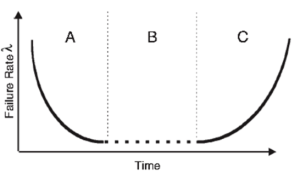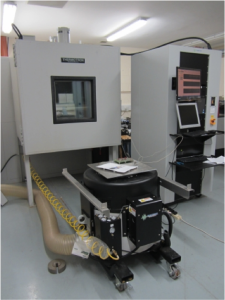Posted By: ITA-Admin | Date: July 21st, 2014

Why is reliability important?
If you’re an Engineering Manager, Design Engineer, Process Engineer or Quality Manager/Engineer working in an electronics environment, then component and product reliability is likely to be a significant issue for you. Why? Because product reliability has a big impact on future sales revenues and on costs. In the case of the latter, there is not only the cost of repairs, recalls or replacements if things go wrong, but the standard of reliability required is a major determinant in the cost of manufacture.
What is Reliability?
Perhaps at this point we should clarify what we mean by ‘reliability’. “The probability that a piece of equipment operating under specified conditions will perform satisfactorily for a given period of time”.
Reliability can and will affect the whole financial model of the product. It’s not just about zero failures over x years.
There is a delicate balance to be struck. If failures occur within the warranty period, there will be a financial cost and also a cost to reputation. If they occur outside of the warranty period, then serviceable items can be charged for.
How do you assess reliability?
You will need to consider:
When should testing be done? Take a look at this graph:
 In region “A”, poor workmanship and substandard components cause failures. This period is usually a few hundred hours and a “burn in” is sometimes employed to stop these failures occurring in the field. Note that this does not stop the failures occurring, it just ensures that they happen in-house and not on the customer’s premises.
In region “A”, poor workmanship and substandard components cause failures. This period is usually a few hundred hours and a “burn in” is sometimes employed to stop these failures occurring in the field. Note that this does not stop the failures occurring, it just ensures that they happen in-house and not on the customer’s premises.
During region “B”, is the stage where most reliability testing is carried out, unless it is required as part of the design phase to test an innovative new approach that has no precedent testing data.
In region “C”, components begin to fail through having reached their end of life, rather than by random failures. For high reliability products, it is the division between region B & C that we are trying to assess.
What types of testing can you employ to prove the reliability of electronics products?
The type of testing that is appropriate will depend a number of factors:
Here are some test methods that can help you to prove the reliability of electronic products:

1. Accelerated Testing
Induces field failure in the laboratory at a much faster rate by providing a harsher, but nonetheless representative, environment. The product should fail in the same way as it would have failed in the field—but in much less time.
This type of testing is used to:
2. Environmental Testing
3. SIR Testing
Surface Insulation Resistance (SIR) testing is a methodology used to characterise PCB manufacturing and electronics assembly process residues and their impact on reliability.
4. Corrosion Cycling
5. Drop or Mechanical Shock
Why should you consider using benchmarking?
 Having a benchmark can be very useful. In the case of a previous generation of the product, you will have real world usage data to compare the current set of results with, to give you confidence in the testing. If the incumbent product is reliable for so many years, and the new generation matches or is better under representative conditions, then that will give you a certain comfort factor.
Having a benchmark can be very useful. In the case of a previous generation of the product, you will have real world usage data to compare the current set of results with, to give you confidence in the testing. If the incumbent product is reliable for so many years, and the new generation matches or is better under representative conditions, then that will give you a certain comfort factor.
However, the most important benchmark to have is the ‘zero hour’ board, otherwise you won’t know what you started with!
Summary:
Best practice suggests you should incorporate reliability testing as part of your product development as early as possible, to ensure that boards can be mounted for testing and that appropriate tests can be designed.
To improve the accuracy of reliability testing, use a benchmark if possible and keep detailed records of test parameters and results.
Test using applicable conditions to your product and take advice where necessary to increase the likelihood that your test parameters will be reflective of real-world conditions.
The more testing you do to prove the reliability of electronic products and the more you can relate it to actual product performance over time, the more accurate it will be.